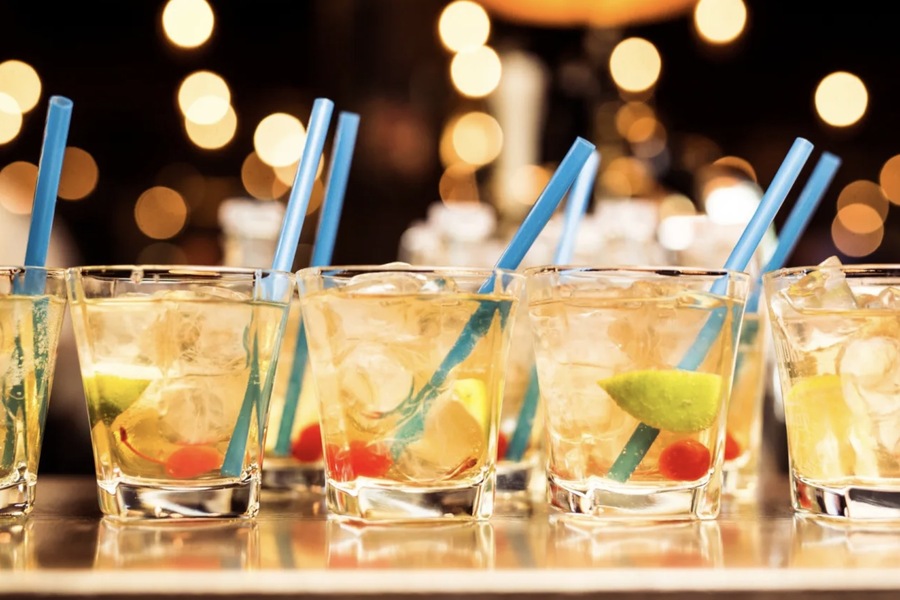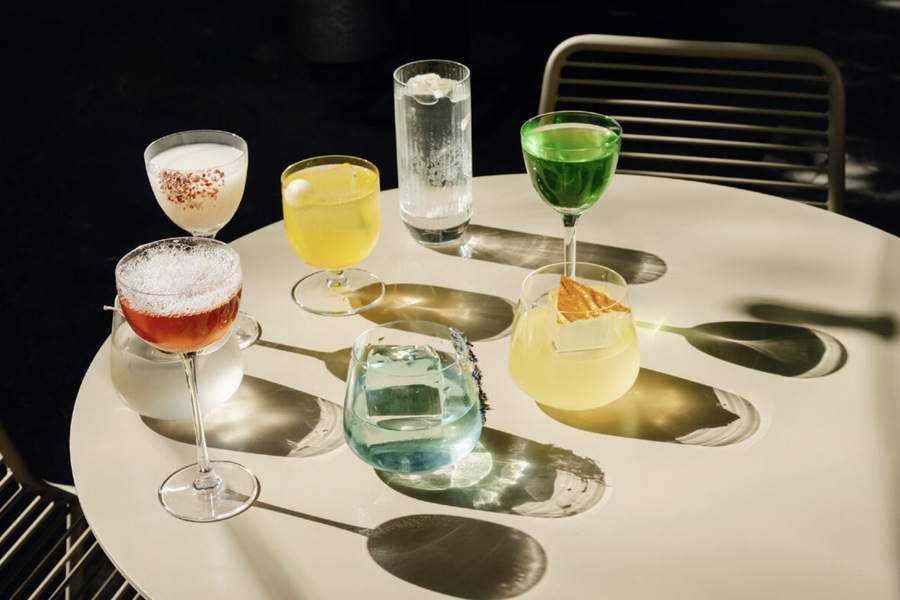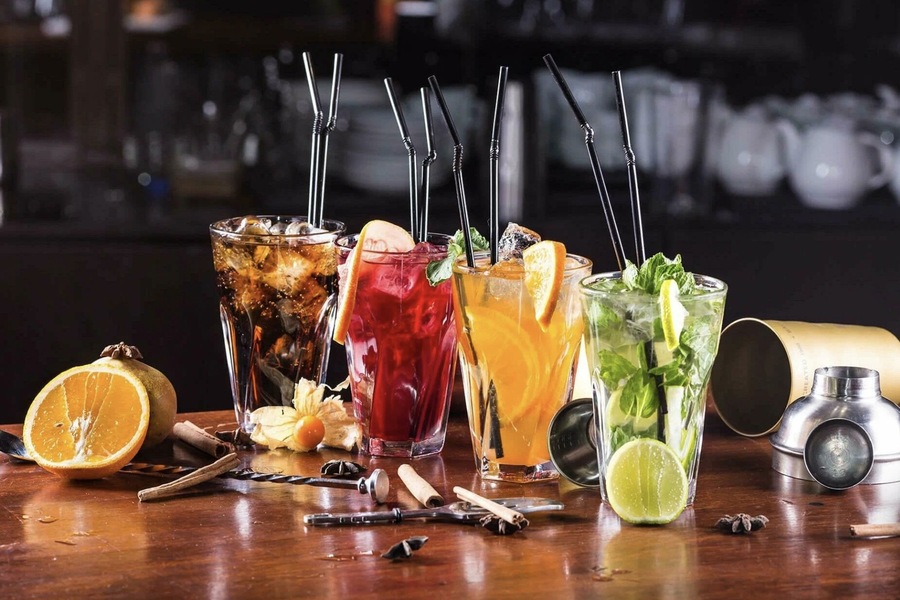Cocktails are far more than just beverages; they are a fusion of flavors, culture, and artistry. Made by mixing several ingredients, most often a combination of alcoholic beverages or one or more spirits with additional elements like fruit juice, flavored syrups, or cream, cocktails have become synonymous with celebration, sophistication, and creativity. While traditional cocktails once adhered to basic combinations, today’s cocktail scene is a dynamic, evolving art form that transcends borders and eras. The world of cocktails has expanded into a global phenomenon, with each region contributing its unique twists to classic recipes while also crafting new and innovative drinks, often showcased in the best bars around the world.
A Glimpse into the Origins of Cocktails
The history of the cocktail is as rich and layered as the drinks themselves. The first known written reference to a cocktail as a drink appeared in 1803 in the U.S. magazine The Farmers Cabinet, but it was not until May 13, 1806, that the term was officially defined in The Balance and Columbian Repository. The definition described a cocktail as a mixture of spirits, sugar, water, and bitters, which at the time distinguished it from other popular drinks, such as punches and toddies.
As time passed, bartenders began experimenting with new ingredients, leading to the rise of complex cocktails that incorporated liqueurs, fruit, and other additives. Jerry Thomas, a pioneering figure in the cocktail world, published How to Mix Drinks or The Bon Vivant’s Companion in 1862. This book served as the first comprehensive guide to mixing cocktails and is still regarded as an important resource for modern bartenders. His work included recipes that used bitters to give cocktails their distinct flavors, setting them apart from other mixed drinks.
By the early 20th century, cocktails had become integral to social gatherings. In 1917, Mrs. Julius S. Walsh, Jr. of St. Louis, Missouri, hosted what is considered the first cocktail party, bringing cocktails into the mainstream as a key element of entertainment. During Prohibition in the United States (1920–1933), when the sale and consumption of alcoholic beverages were outlawed, the popularity of cocktails soared. Despite the legal restrictions, underground bars called speakeasies continued to serve illicit cocktails. The low-quality alcohol available at the time led to the development of new recipes, using ingredients like fruit juice, honey, and syrups to mask the harsh taste of bootleg spirits.
The Golden Age of Cocktails
Post-Prohibition, the cocktail world entered what is known as its “Golden Age.” Between the 1920s and 1960s, cocktails gained an international presence, becoming a staple of high-society events, Hollywood movies, and even political diplomacy. Iconic cocktails like the Martini, Manhattan, and Old Fashioned became symbols of sophistication, often associated with glamorous figures and settings. Famous bars, such as New York’s 21 Club and the American Bar at the Savoy Hotel in London, became renowned for their cocktail culture, with bartenders developing their own variations of popular drinks.
During the mid-20th century, cocktails such as the Martini, with its association with James Bond, gained global notoriety. The Martini, whether shaken or stirred, became a symbol of elegance and mystery. Similarly, the Mojito, a rum-based drink originating in Cuba, and the Whiskey Sour gained popularity, each representing different regions and their influence on cocktail culture.
Despite a decline in popularity during the 1960s and 70s, as preferences shifted toward simpler, more straightforward beverages, the 1980s saw a resurgence in cocktails. Vodka, in particular, became a popular base for drinks, replacing gin in many traditional recipes like the Martini. The creation of new cocktails using vodka, such as the Cosmopolitan, reintroduced cocktails into pop culture.

The Rise of Mixology: Craft Cocktails and Innovation
The early 2000s marked the birth of the modern cocktail renaissance. This era is defined by the rise of mixology—the craft of combining flavors and ingredients in innovative ways to elevate the cocktail from a simple drink to an art form. Unlike traditional bartending, which focuses on quick and efficient service, mixology emphasizes creativity, precision, and the exploration of new ingredients and techniques.
Mixologists have expanded beyond the classic spirit-sugar-bitters-water framework, using exotic fruits, homemade syrups, herbs, spices, and even molecular gastronomy techniques to create cocktails that surprise and delight. Ingredients like lavender, chili, balsamic reductions, and smoke have made their way into cocktails, creating complex flavor profiles that were once unimaginable.
The barrel-aged cocktail is one example of the innovative trends in modern mixology. In this process, cocktails are aged in oak barrels, allowing the flavors to develop and intensify over time. This technique has breathed new life into classics like the Negroni and the Boulevardier. Another trend is the infused cocktail, where spirits are infused with unique ingredients such as herbs, spices, and even bacon, adding depth and richness to the final drink.
Technology has also played a role in transforming the cocktail landscape. Molecular mixology—the use of scientific techniques in cocktail making—has become a trend, with bartenders using liquid nitrogen to create dramatic frozen drinks or edible cocktails in the form of spheres or foams. This blending of art and science has expanded what is possible in the world of cocktails, making it an exciting and ever-evolving field.
Types of Cocktails: Aperitifs, Digestifs, and Long Drinks
Cocktails are categorized based on when they are consumed, their ingredients, and the style of serving. While the classic cocktails like the Martini or Manhattan fall into the broader category of alcoholic cocktails, some subcategories deserve mention:
Aperitifs
These are light, refreshing cocktails typically consumed before a meal to stimulate the appetite. Aperitifs often have bitter or herbal flavors and include drinks like the Negroni, Aperol Spritz, and the classic French Kir.
Digestifs
In contrast to aperitifs, digestifs are meant to be consumed after a meal to aid digestion. They are often stronger and sweeter than aperitifs, with examples including the Brandy Alexander, Amaro-based cocktails, and dessert-like drinks like the Grasshopper.
Long Drinks
These refreshing cocktails are served in tall glasses over ice, often with a higher proportion of mixers like soda or tonic. Long drinks, such as the Mojito, Gin and Tonic, and Pimm’s Cup, are perfect for hot summer days, providing a balance of alcohol and refreshment.
Signature Cocktails
Many cocktail bars around the world have introduced signature cocktails, unique drinks that cannot be easily replicated at home. These creations are a testament to the creativity and skill of the bartender, with exclusive recipes that turn cocktails into exclusive experiences. Bars in cities like New York, London, Paris, Tokyo, and Dubai are known for their one-of-a-kind drinks that attract connoisseurs from around the globe.
Famous Cocktail Bars Around the World
The rise of cocktail culture has also led to a boom in cocktail bars, many of which have gained international recognition for their innovative drinks, ambiance, and skilled bartenders. Some of the most celebrated cocktail bars across the globe include:
The Dead Rabbit Grocery and Grog (New York, USA)
A bar steeped in history, serving both classic and innovative cocktails.
Connaught Bar (London, UK)
Famous for its elegant setting and martini trolley, this bar is a blend of tradition and modern mixology.
Bar Hemingway (Paris, France)
Known for its association with Ernest Hemingway and its timeless cocktails.
Employees Only (New York, USA)
A speakeasy-style bar with award-winning cocktails.
Atlas Bar (Singapore)
A luxurious Art Deco-inspired bar known for its extensive gin selection and imaginative cocktails.
Galaxy Bar (Dubai, UAE)
Combining a stunning rooftop setting with innovative cocktail creations, Galaxy Bar stands as a premier destination for cocktail enthusiasts in the Middle East.

The UAE’s Growing Cocktail Scene
The cocktail scene in the UAE, particularly Dubai, has witnessed exponential growth over the past decade. With an international population and an array of luxury hotels and high-end restaurants, Dubai offers a dynamic cocktail culture that merges global trends with regional flavors. Bars like Galaxy Bar and Zuma have gained global recognition for their inventive drinks and top-tier service.
The UAE’s cocktail culture is also influenced by the Middle Eastern palate, with ingredients such as saffron, dates, rosewater, and spices being incorporated into cocktails. The innovative use of these ingredients creates unique cocktails that blend tradition and modernity, offering an unforgettable experience to both residents and visitors alike.
The Global Influence of Cocktails in Modern Culture
Beyond bars and restaurants, cocktails have become an integral part of modern pop culture. Drinks like the Martini have been immortalized in movies (thanks to James Bond), while others like the Cosmopolitan gained fame through TV shows like Sex and the City. Cocktails are now synonymous with sophistication, luxury, and celebration.
In the digital age, cocktail recipes are widely available on websites, blogs, and social media platforms. This accessibility has led to a growing interest in home bartending, with cocktail enthusiasts experimenting with both classic and modern recipes in their kitchens.
Conclusion: The Endless Possibilities of Cocktail Culture
Today, the cocktail world is a testament to human creativity and the global fusion of flavors. From humble beginnings to modern-day mixology, cocktails have evolved into a culinary art form that brings people together for celebration, exploration, and social connection. Whether you’re enjoying a timeless classic like the Old Fashioned or sipping a newly crafted signature drink in a rooftop bar, cocktails continue to inspire and captivate drinkers around the world.
The next time you find yourself in a bar, whether it’s a hidden speakeasy in New York or a luxurious rooftop in Dubai, take a moment to appreciate the history, innovation, and craftsmanship that goes into every cocktail—each sip is a taste of history, tradition, and the boundless future of mixology. Cheers!
